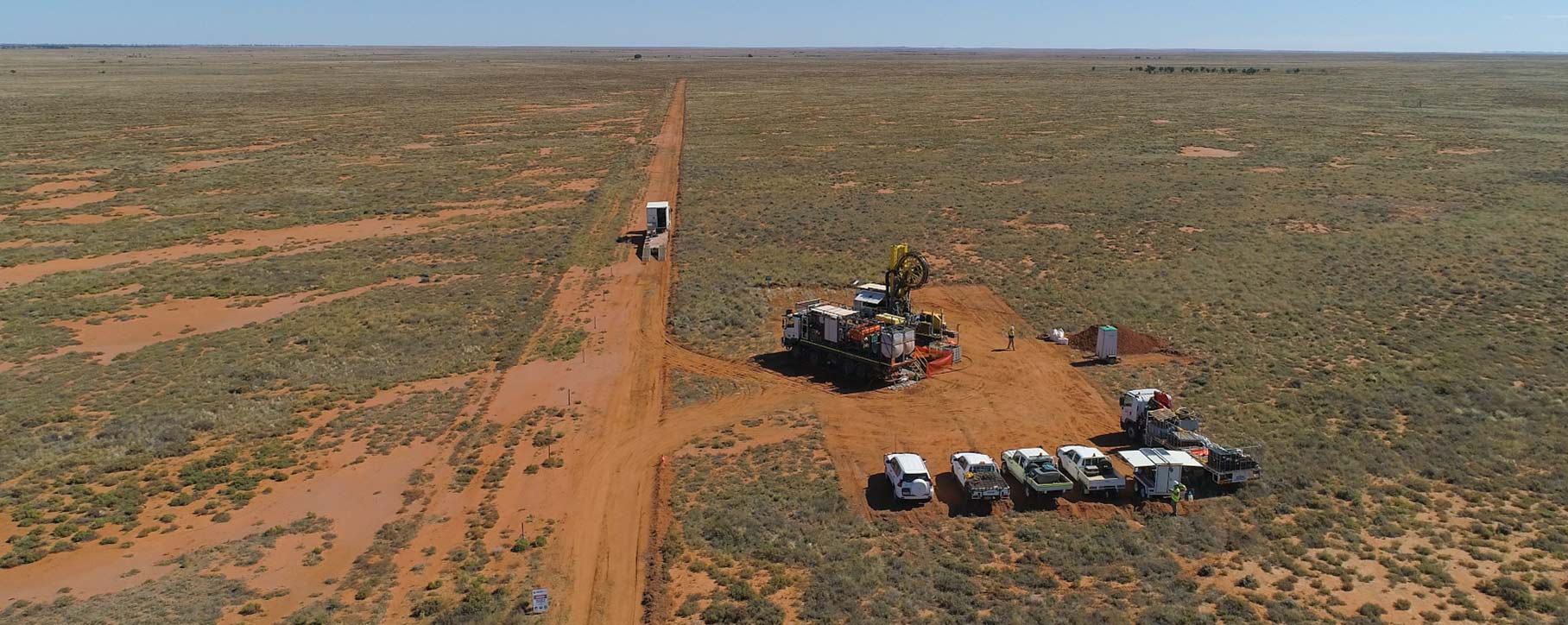News
New scientific drilling results suggest potential major mineral prospectivity in western NSW regions
Published:30 November 2023
New results from a far-western New South Wales stratigraphic drilling campaign, conducted between March and June 2023, have shown the region’s potential to host new mineral resources, including gold, copper and nickel, as well as the critical minerals vital for Australia’s low emissions future.
Managed under a partnership between Geoscience Australia’s Exploring for the Future program, MinEx CRC and the New South Wales Government, the drilling campaign has uncovered new samples from the Mildura and Broken Hill region that are helping to answer questions about the geology of the Delamerian Orogen.
Formed around 500 million years ago, the underexplored Delamerian Orogen stretches more than 2,000 kilometres across parts of New South Wales, South Australia, and Victoria.
By using a variety of geoscientific techniques, scientists at Geoscience Australia have studied existing mineral deposits from this region to better understand how and where minerals may have formed in the area.
This understanding, combined with analysis of rock samples taken during the recent drilling campaign, suggest that this vastly underexplored region could host as-yet-undiscovered major mineral resources.
Westward facing photograph of the MinEx CRC RoXplorer drill pad in far western New South Wales - borehole location for NDILLK06
Chris Lewis, Director of Regional Geology and Drilling at Geoscience Australia said that while these samples have shed some light on the potential prospectivity of the region, parts of the Delamerian Orogen are still hidden beneath up to 800 metres of younger rocks and sediments, including in the Murray Basin.
“While we have pinpointed a few locations with promising mineral resource potential, the goal of this campaign is to form a comprehensive view of the entire region, and potentially even connect the known mineral discoveries to those yet to be found,” Mr Lewis said.
“We are trying to join the dots so we can take a step back, look at the whole picture and gain a better understanding of what lies beneath the surface. This will help identify new mineral resources, including critical minerals, that are essential for clean energy technologies such as solar panels, wind turbines and electric car batteries.”
Mr Lewis also stated that the new data will help provide an understanding of the region’s geological evolution.
“We were able to collect rock samples that link known mineral deposits to the poorly understood geology beneath the Murray Basin, and to geological events that could have formed deposits such as copper and gold,” he said.
“From this we now have data that provides strong evidence for three major geological events that may have occurred in the distant history of the region. These include mountain-building collisions of tectonic plates, and subsequent magmatic events, that would have had the potential to drive the formation of a range of deposits.”
In addition to conventional diamond drilling, the program utilised the MinEx CRC RoXplorer coil tubing (CT) drilling platform, designed in collaboration with industry partners Anglo American, BHP, Epiroc, South 32, Wassara and the Mineral Research Institute of Western Australia (MIRWA).
Andrew Bailey, MinEx CRC CEO, said new exploration technology was crucial for a sustainable resources future.
“The CT drilling platform occupies a drill site of 20 x 20 metres, significantly smaller than required for conventional drill rigs in a comparable drilling scenario. During recent field trials, average diesel and water consumption were also significantly lower.”
“This is not just a drill rig; it’s a complete mobile sampling system. It is set up faster, drills faster and mobilises faster,” Mr Bailey said.
Results of the campaign are publicly available, accessible to communities, industry and research organisations. Find them here: https://dx.doi.org/10.26186/148645 https://dx.doi.org/10.26186/148639
